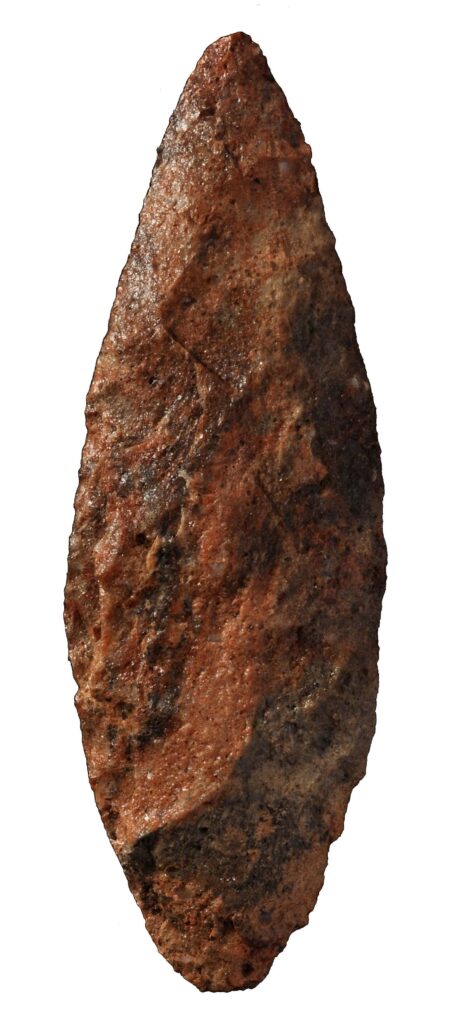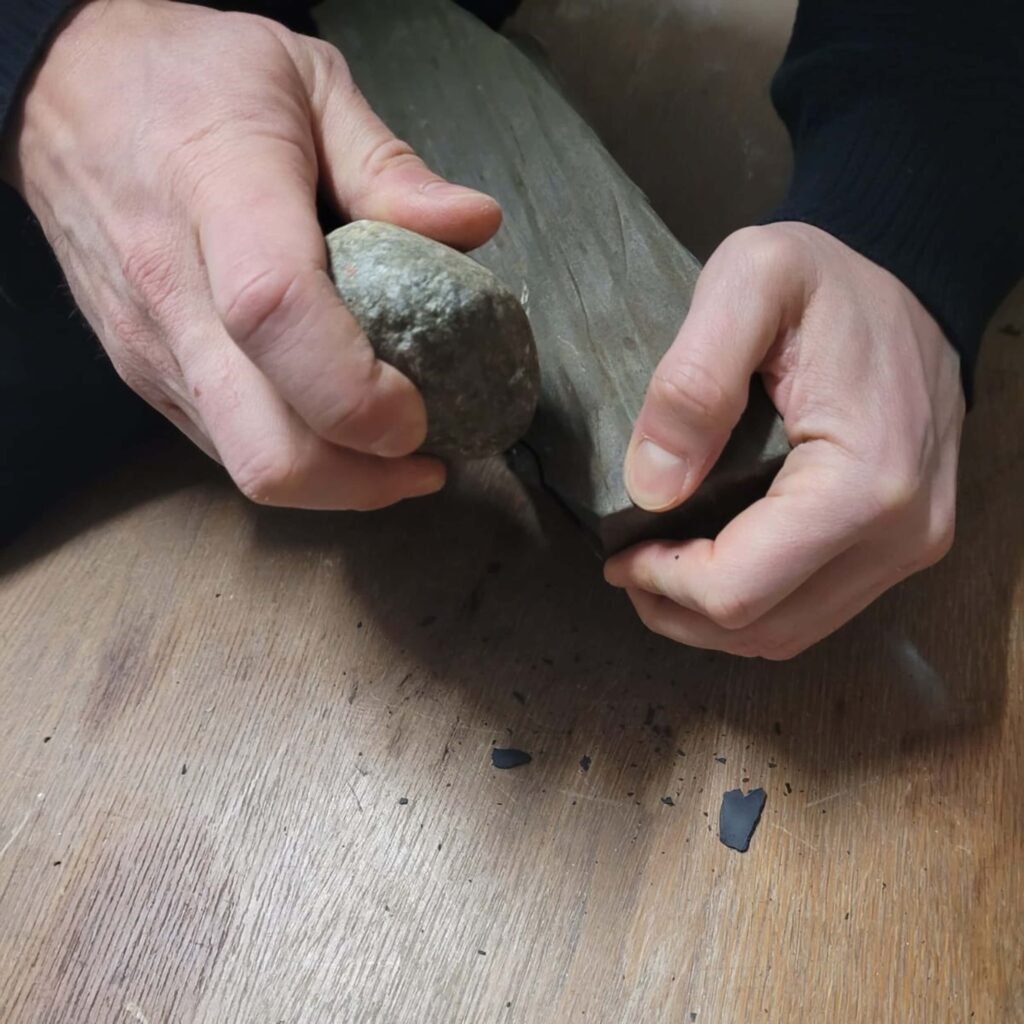Early humans as engineers – University of Tübingen-led international research team investigates how our ancestors used the best material to make stone tools

Early hunter-gatherers from the Middle Stone Age in southern Africa were selecting the most suitable material available for stone tools and spearheads more than 60,000 years ago, according to a study by Dr. Patrick Schmidt from the University of Tübingen’s Early Prehistory and Quaternary Ecology section. Researchers on the study used a specially developed model to test the force needed to flake off pieces from various rocks which were used to make sharp-edged tools at the Diepkloof Rock Shelter, a site about 150 kilometers north of Cape Town. The study has been published in the latest edition of Proceedings of the National Academy of Sciences (PNAS).

For the longest period of human history, stone was the most important raw material for toolmaking.
“Stones were ’napped’ or flaked to make tools such as knives and scrapers,” says Patrick Schmidt.
The Stone Age began around 2.6 million years ago and only ended around 2000 BC, depending on the region. The first step in tool production was the collection of specific stones. Working with a team from the geosciences and the Competence Center Archaeometry Baden-Wuerttemberg at the University of Tübingen and the University of Aix-Marseille, Schmidt investigated the question of how early humans began making a careful selection of their raw material.
Model for measuring fracture force
The research team carried out their study at one of the most important Middle Stone Age sites, the Diepkloof Rock Shelter in South Africa’s Western Cape province. It is known for some of the earliest evidence of the use of symbols by humans: around 60,000-year-old ostrich egg shells, decorated with patterns and used as water containers.
“We investigated which rocks were used for the tools and spearheads found there. These include quartzite, silcrete and a rock called hornfels,” says Schmidt. “We obtained pieces of the same rock from the surrounding area and analyzed their mechanical properties.”
The research team developed a physical model that can be used to calculate the relative force required to produce flakes from a particular rock or to break it.
“Our calculation is based on standard measurements known from materials science. What we propose is a new way to interpret such measurements in terms of tool-stone quality,” Schmidt says.
“Our comparisons show that the hunter-gatherers of Diepkloof selected those rocks with the best combination of properties for a particular tool form,”
says Schmidt, summarizing the results. As an example, he mentions Still Bay Points – finely crafted thin points that were shaped on both sides. These were made from a material that requires relatively little force during tool production, but, when made into projectiles, breaks only under relatively high forces.
“The reason for this is the different volumes in which the fracture phenomena take place. During production, fractures are generated in relatively small volumes near the edge of the piece. When the finished point is used as projectile, the resulting impact force is distributed across the entire volume of the point.”
Knowledge of material properties
The study shows that as early as the Middle Stone Age, people in Africa were well aware of various material properties and therefore selected certain types of rock according to purpose.
“Such findings help us to understand the processes that took place among our ancestors on the way to modernity. They show these people to be engineers who used their extensive knowledge of the available resources in a targeted manner,” says Schmidt.

Bibliographic information:
Patrick Schmidt, Ioannis Pappas, Guillaume Porraz, Christoph Berthold, Klaus G. Nickel: The driving force behind tool-stone selection in the African Middle Stone Age, Proceedings of the National Academy of Sciences (PNAS), DOI: https://doi.org/10.1073/pnas.2318560121
Press release from the University of Tübingen



